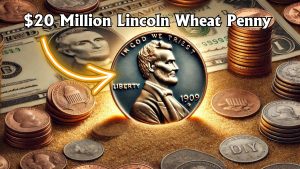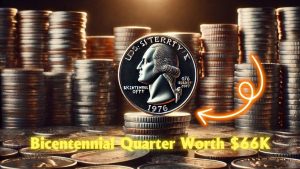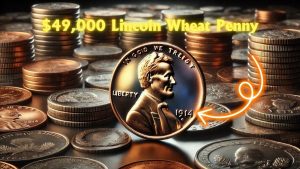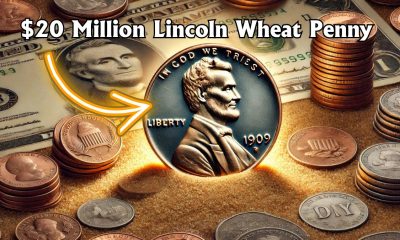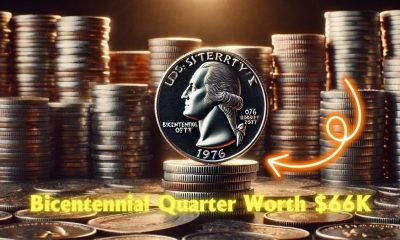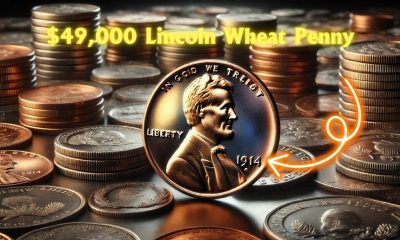Money
The $8 Million Rare Bicentennial Quarter- Still Circulating Today
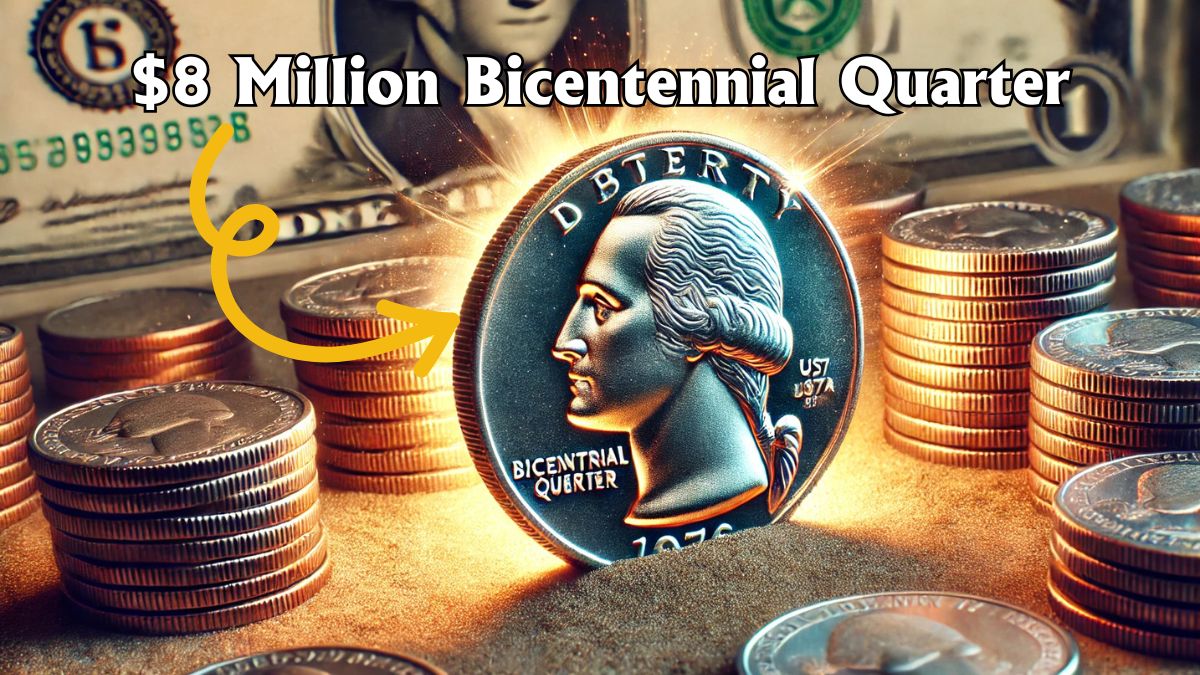
The 1976 Bicentennial Quarter, minted to commemorate the 200th anniversary of the United States’ independence, holds a special place in American numismatics.
While most of these quarters are common, certain rare versions have fetched astonishing prices at auctions, with some reaching up to $8 million.
This article delves into the factors that contribute to such high valuations and explores other valuable coins that might still be in circulation today.
The Bicentennial Quarter: A Brief Overview
In 1976, the U.S. Mint released a special quarter featuring a unique design to celebrate the nation’s bicentennial.
The obverse side retained the traditional portrait of George Washington, while the reverse showcased a colonial drummer boy, a torch encircled by 13 stars, and the dual date “1776-1976.”
Over 1.6 billion of these quarters were minted, making them a common find in everyday transactions.
The $8 Million Rarity: What Sets It Apart?
Among the vast number of Bicentennial Quarters produced, a select few have become highly valuable due to specific characteristics:
- Minting Errors: Some quarters exhibit rare minting errors, such as double dies or striking flaws, which significantly increase their value.
- Silver Composition: While most Bicentennial Quarters were minted in a copper-nickel clad composition, a limited number were struck in 90% silver. These silver versions are particularly sought after by collectors.
- Proof Quality: Coins minted with exceptional detail and mirror-like finishes, known as proofs, are more valuable, especially when preserved in pristine condition.
A combination of these factors can elevate the value of a Bicentennial Quarter to extraordinary levels. For instance, a silver proof quarter with a prominent minting error and in mint condition has been known to fetch up to $8 million at auction.
Other Notable Rare Coins
Beyond the Bicentennial Quarter, several other U.S. coins have achieved remarkable valuations due to their rarity and historical significance:
| Coin | Year | Notable Features | Approximate Value |
|---|---|---|---|
| 1794 Flowing Hair Silver Dollar | 1794 | Believed to be the first silver dollar minted in the U.S.; features Lady Liberty with flowing hair. | Over $10 million |
| 1933 Saint-Gaudens Double Eagle | 1933 | $20 gold coin; most were melted down due to the Gold Reserve Act, making surviving specimens extremely rare. | Over $7.5 million |
| 1913 Liberty Head Nickel | 1913 | Only five known to exist; unauthorized minting adds to its mystique. | Approximately $4.5 million |
| 1804 Draped Bust Silver Dollar | 1804 | Known as the “King of American Coins”; minted as diplomatic gifts in the 1830s. | Over $4 million |
| 1894-S Barber Dime | 1894 | Only 24 minted, with just 9 known survivors; features Liberty’s head on the obverse. | More than $1.9 million |
Factors Influencing Coin Value
Several elements contribute to the high valuations of certain coins:
- Rarity: Coins with limited mintage or surviving specimens are more valuable.
- Condition: Coins in mint or near-mint condition command higher prices.
- Historical Significance: Coins associated with notable events or periods in history are highly sought after.
- Minting Errors: Unique errors during the minting process can make a coin one-of-a-kind and increase its value.
Tips for Aspiring Collectors
If you’re interested in coin collecting, consider the following:
- Educate Yourself: Learn about coin grading systems and familiarize yourself with key terms.
- Inspect Your Change: Rare coins can sometimes be found in everyday transactions; always check your coins.
- Preserve Condition: Handle coins carefully, store them properly, and avoid cleaning them, as improper cleaning can reduce their value.
- Seek Professional Appraisals: If you believe you have a valuable coin, consult with a reputable coin dealer or grading service.
In conclusion, while the chances of finding an $8 million Bicentennial Quarter in your pocket change are slim, understanding the factors that contribute to a coin’s value can enhance your appreciation for these small pieces of history.
Whether you’re a seasoned collector or a curious novice, the world of rare coins offers a fascinating glimpse into the past and the potential for unexpected treasures.
FAQs
How can I identify a valuable Bicentennial Quarter?
A valuable Bicentennial Quarter may have distinguishing features such as a silver composition, proof quality, or minting errors like double dies. Consulting a coin expert can provide a definitive assessment.
Are all Bicentennial Quarters valuable?
No, the majority of Bicentennial Quarters are common and hold only their face value. Only those with specific rare characteristics are considered highly valuable.
How can I determine if my coin is made of silver?
Silver coins often have a distinct appearance and lack the copper-colored edge found on clad coins. Weighing the coin can also provide clues, as silver coins are typically heavier.
-

 Government Aid1 week ago
Government Aid1 week agoFebruary SSDI Payments: Only This Group Will Receive the First Checks of Next Month
-
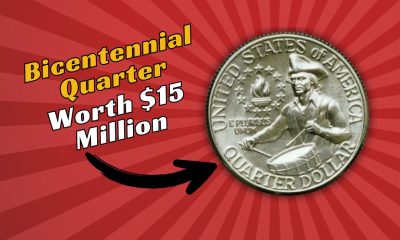
 Finance2 days ago
Finance2 days agoRare Bicentennial Quarter Worth $15 Million
-
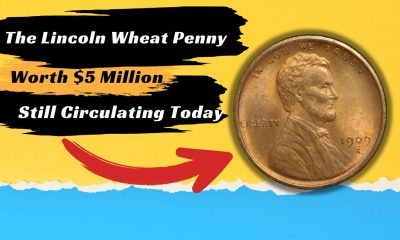
 Finance5 days ago
Finance5 days agoThe Lincoln Wheat Penny Worth $5 Million- Still Circulating Today
-
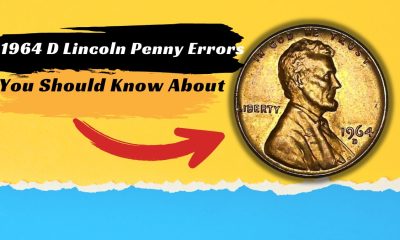
 Finance2 days ago
Finance2 days agoRare Coins: The 1964 D Lincoln Penny Errors You Should Know About
-

 Government Aid2 days ago
Government Aid2 days agoSocial Security Announces 2025 Check Increase, But a 23% Reduction is Expected Soon
-
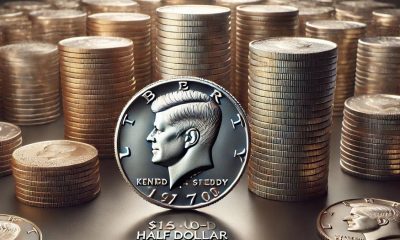
 Finance2 days ago
Finance2 days ago1970-D Kennedy Half Dollar- A Rare Coin Worth Over $150,000 Still in Circulation!
-

 Government Aid5 days ago
Government Aid5 days agoThe Complete February SSDI Payment Schedule: Discover When You’ll Receive Your Disability Benefits
-

 Government Aid1 week ago
Government Aid1 week agoConfirmed: What You Need to Know to Collect $1,900 in Social Security by January 31

